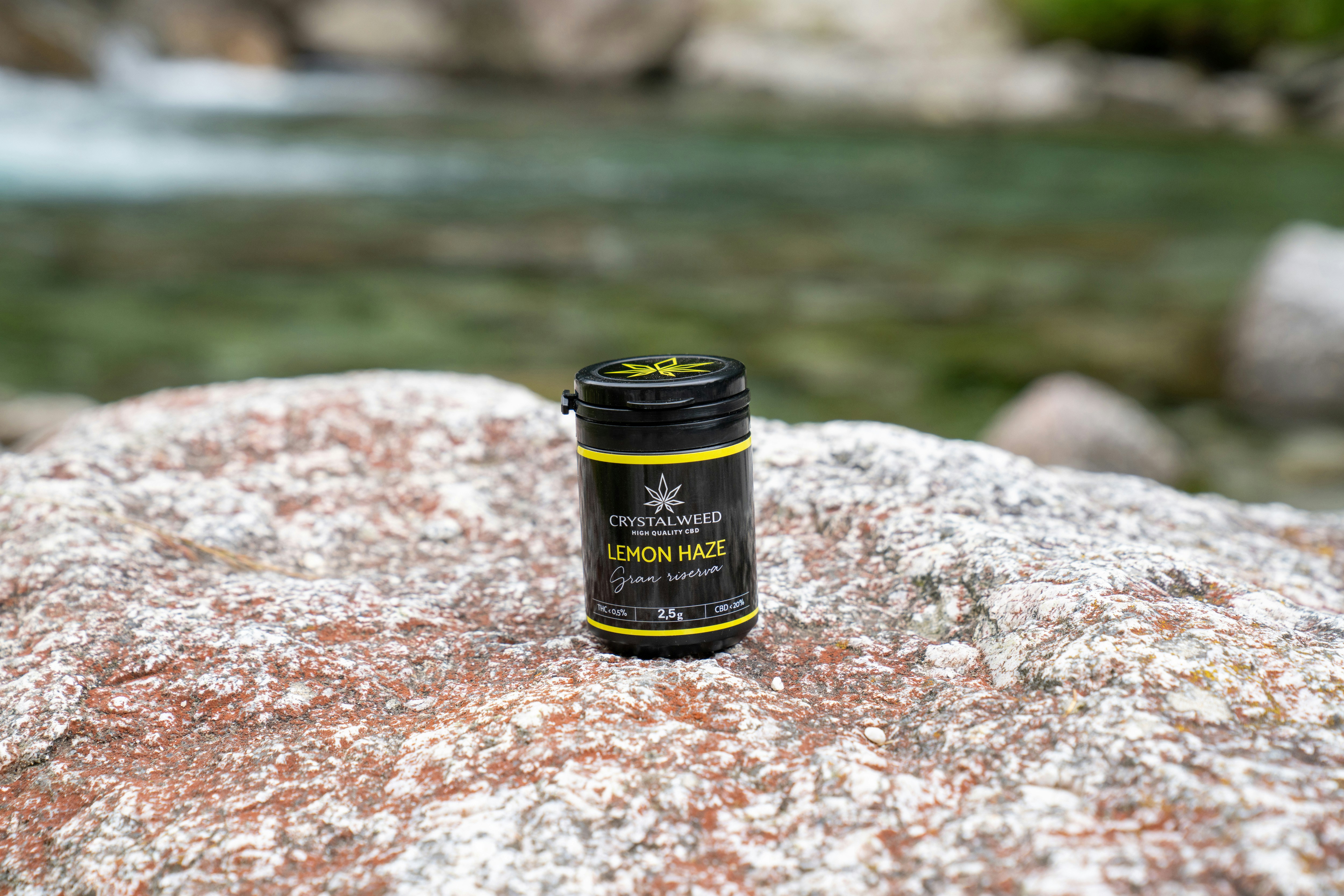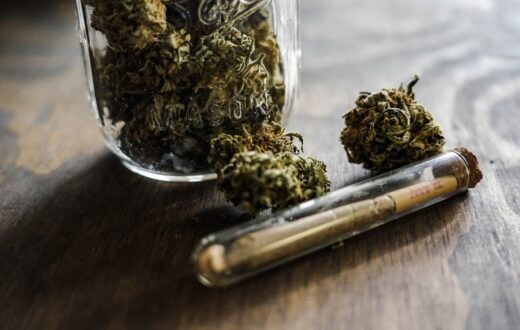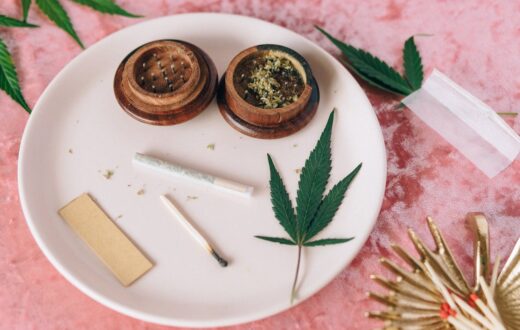Introduction to Lemon OG Weed Strain
The Lemon OG weed strain has garnered significant attention within the cannabis community for its unique flavor, impressive effects, and robust yield potential. This hybrid strain is a cross between the well-known Lemon Skunk and the popular OG Kush, combining the citrusy notes of lemon with the earthy undertones characteristic of OG strains. As a result, Lemon OG stands out with its vibrant aroma, reminiscent of fresh lemons, making it particularly appealing to cannabis enthusiasts.
In terms of genetic profile, Lemon OG is predominantly indica, which contributes to its relaxing effects. However, the slight sativa influence also provides an uplifting and euphoric high, offering users the best of both worlds. This balance makes it a suitable choice for a variety of occasions, whether for recreational or medicinal use. The strain is often praised for its ability to alleviate symptoms of stress, anxiety, and chronic pain, making it a favored option among medical cannabis users.
The popularity of the Lemon OG weed strain among growers can be attributed to its relatively easy cultivation process and impressive yield potential. This strain thrives in both indoor and outdoor environments, though it flourishes optimally with proper care and attention. Growers can expect dense, resinous buds adorned with a generous coating of trichomes, a visual testament to the strain’s potency. Furthermore, its flowering time of around 8 to 9 weeks allows cultivators to enjoy fruitful harvests relatively quickly.
In summary, the Lemon OG weed strain encapsulates the essence of a delightful cannabis experience, combining an enticing flavor profile with a powerful high and high yield potential, reinforcing its status as a favorite among growers and users alike.
Understanding Lemon OG’s Genetics
The Lemon OG weed strain is renowned for its unique flavor profile and balanced effects, stemming primarily from its genetic lineage. As a hybrid strain, Lemon OG is a cross between two renowned cannabis varieties: Lemon Skunk and OG Kush. Recognizing the ancestry of Lemon OG provides invaluable insights for growers and enthusiasts alike, particularly in understanding how to grow Lemon OG weed strain successfully.
Lemon Skunk contributes significantly to the strain’s aromatic and flavor characteristics, imbuing it with a distinct citrus scent that is both invigorating and pleasant. This lineage is not only responsible for the strain’s zesty flavor but also plays a crucial role in its growth traits. Lemon Skunk is known for its vigorous growth, which can inform growers about the cultivation techniques required to optimize yield.
On the other hand, OG Kush, a legendary strain in its own right, adds depth to Lemon OG’s genetic profile. Known for its robust effects, OG Kush enhances the strain’s potency, providing a balanced high that is both uplifting and relaxing. As such, growers should expect Lemon OG to reflect these characteristics, often offering a harmonious blend of euphoria and physical relief. The genetic stability derived from its two parents contributes to its resilience against common pests and diseases, further aiding in yielding a healthy crop.
Moreover, understanding Lemon OG’s genetics can also provide insights into its phenotypic variations. While growing Lemon OG weed strain, cultivators might encounter differences in bud structure and growth patterns. This means that having knowledge of its genetic lineage can guide growers in making informed decisions to optimize their cultivation techniques, promoting healthy growth and rich flavors that this strain is celebrated for.
Ideal Growing Conditions for Lemon OG
Growing Lemon OG weed strain successfully relies heavily on creating an optimal environment. This particular strain flourishes under specific conditions, which can significantly influence the plant’s growth rate, health, and overall yield. To maximize your results, it is essential to pay close attention to light, temperature, humidity, and soil types.
Light is one of the most critical factors in cultivating Lemon OG. This strain thrives under intense light, ideally between 600 to 1,000 watts for indoor setups. For outdoor growth, ensure that your plants receive ample sunlight throughout the day, as they require at least 6-8 hours of direct sunlight for optimal development. The quality of light will not only affect growth speed but will also enhance the quality of the buds produced.
Temperature control is another vital aspect. Lemon OG prefers a consistent range of temperatures between 70°F to 80°F during the day, with a slight dip at night to mimic natural conditions. Keeping temperatures within this range reduces stress on the plants and promotes healthy growth. In contrast, temperatures falling below 60°F can hinder the plant’s development and yield.
Furthermore, maintaining the right humidity levels is essential, particularly during the vegetative stage where humidity should be around 40-60%. As the plants transition to the flowering stage, reducing humidity to 40% helps prevent mold and other issues. It is advisable to monitor humidity levels diligently, as fluctuations can stress the Lemon OG strain and impact its yield negatively.
In terms of soil types, Lemon OG thrives well in nutrient-rich, well-draining soil. A mix that includes compost and perlite will provide necessary nutrients while ensuring adequate drainage. By carefully considering these growing conditions, you can effectively maximize the yield and potency of the Lemon OG weed strain.
Nutrient Requirements for Healthy Growth
To successfully cultivate the Lemon OG weed strain, understanding its nutrient requirements is essential. Lemon OG thrives when provided with the right balance of macronutrients and micronutrients throughout its growth stages. The primary macronutrients include nitrogen (N), phosphorus (P), and potassium (K), while secondary nutrients such as calcium, magnesium, and sulfur play significant supporting roles. The varying needs of these nutrients shift at different growth phases, from seedlings to vegetative growth and finally to the flowering stage.
During the seedling phase, Lemon OG requires lower levels of nutrients. A diluted nutrient solution rich in N helps promote healthy root development. Once the plants transition to the vegetative stage, their nitrogen needs increase to support robust leaf and branch growth. Growers should adopt a nutrient regimen that reflects the plant’s heightened demand for N, along with balanced levels of P and K, which help facilitate overall plant health and strong structural support.
As Lemon OG enters its flowering stage, the nutrient game shifts significantly. This strain benefits from an enhanced phosphorus and potassium supply to promote dense flower production. Reducing nitrogen intake at this stage can prevent excessive foliage growth at the expense of bud development. Therefore, it is crucial to adjust nutrient proportions based on the plant’s current growth cycle.
Alongside nutrient macronutrients, maintaining appropriate pH levels in the soil or hydroponic system is vital. Lemon OG prefers a pH range of 6.0 to 7.0 for soil and 5.5 to 6.5 for hydroponics to maximize nutrient absorption. Regular pH testing and adjustments will ensure that the plant can efficiently take up essential nutrients, thereby fostering healthy, vigorous growth. When growers understand how to grow Lemon OG weed strain with respect to its nutrient needs and pH levels, they set the stage for a successful cultivation experience.
Common Pests and Diseases
When cultivating the Lemon OG weed strain, growers must remain vigilant about potential threats from pests and diseases that can compromise the integrity and yield of the plants. Understanding these common adversaries is essential in ensuring a successful harvest.
Among the most frequent pests that target cannabis plants, aphids, spider mites, and whiteflies are particularly noteworthy. Aphids are small sap-sucking insects that can weaken plants by consuming vital nutrients, leading to stunted growth and yellowing leaves. Spider mites, barely visible to the naked eye, can cause significant damage by creating fine webbing and causing leaf chlorosis. Whiteflies also feed on plant sap and can transmit diseases, making them a dual threat. To prevent these pests, growers should employ natural predators such as ladybugs or implement neem oil as an organic pesticide. Regular monitoring and maintaining strong plant health through proper nutrition and environmental conditions can also minimize infestations.
In addition to pests, certain diseases can affect Lemon OG plants, including powdery mildew and root rot. Powdery mildew manifests as a white powdery substance on leaves, often arising from high humidity levels and poor air circulation. Effective prevention includes adequate spacing between plants, ensuring proper airflow, and utilizing fungicides when necessary. Root rot, caused primarily by overwatering and poorly-draining soil, can be detrimental as it compromises the plant’s root system. To counteract this, growers should monitor watering practices, use quality soil mixes with good drainage, and avoid overcrowding roots.
Proper care and proactive measures are vital for protecting Lemon OG from these common pests and diseases. By employing integrated pest management techniques and maintaining optimal growing conditions, cultivators can enhance the resilience of their plants, ultimately leading to a healthier and more productive harvest.
Pruning and Training Techniques
To successfully grow the Lemon OG weed strain, implementing proper pruning and training techniques is essential. These practices not only optimize the growth potential of the plant but also enhance light exposure and air circulation, ultimately leading to a healthier yield. Among the most effective methods are topping, low-stress training (LST), and high-stress training (HST).
Topping is a common practice among cultivators looking to promote bushier plants. This technique involves cutting off the top of the main stem, which encourages the growth of new branches and leads to a more even canopy. By topping Lemon OG at an early age, growers can effectively manage the height of the plant while increasing the number of colas, or flowering sites, that will ultimately produce buds.
Low-stress training (LST) is an effective method that involves gently bending and tying down the branches of the Lemon OG strain. This technique allows for better light distribution across the plant, enabling lower branches to receive more sunlight, which can lead to increased yields. LST requires patience and regular monitoring to ensure that the branches do not become damaged as they grow. This method promotes an even canopy, ensuring all parts of the plant receive adequate light throughout its life cycle.
On the other hand, high-stress training (HST) entails more aggressive techniques, such as super cropping or defoliation. These methods cause temporary stress to the plant, which can stimulate increased growth and larger yields. When applying HST to Lemon OG, it is crucial to know the right timing and method to avoid damaging the plant irreparably. Careful execution can enhance the overall robustness and performance of the Lemon OG strain.
Understanding and implementing these pruning and training techniques can significantly impact the cultivation process of Lemon OG. By maximizing light exposure and promoting healthier growth patterns, growers can expect a more rewarding harvest.
Harvesting Tips for Maximum Yield
Successfully harvesting Lemon OG weed strain requires careful attention to detail to ensure that you achieve the maximum yield while maintaining quality. The first step is determining the optimal time for harvest. Generally, Lemon OG will be ready for harvesting when the trichomes, which are small resin glands on the buds, turn from clear to a milky white color. Some growers may prefer to wait until a portion of the trichomes begins to turn amber, as this can result in a more sedative effect in the final product. Observing the trichome color with a magnifying glass can provide the necessary guidance to ensure you harvest at just the right time.
When you are ready to harvest, ensure that you have the right tools on hand. Sharp, sterilized trimming scissors are essential for cutting the stems cleanly and minimizing potential damage to the plant. Begin the harvest by cutting the main stem close to the base. Handle the branches gently to avoid knocking off any of the valuable trichomes that have developed. It is typically advisable to harvest in the early morning hours when the moisture content of the buds is lower; this will help prevent mold and preserve the integrity of the strain’s unique flavors.
After cutting the branches, consider hanging them upside down in a dark, well-ventilated area to allow for proper drying. This method also helps the buds maintain their quality and potency. Monitor the drying process carefully; generally, a drying period of about one to two weeks is adequate. Once the stems snap easily, you can proceed to manicuring the buds, removing any excess leaves. Storing your harvested Lemon OG weed strain in airtight containers will ensure longevity and preserve its distinct flavor profile. By following these harvesting techniques, cannabis cultivators can maximize both yield and quality from this exceptional strain.
Curing and Storing Lemon OG Buds
Curing and storing Lemon OG buds is a crucial aspect of the cultivation process that significantly impacts the flavor and potency of the cannabis strain. The curing process allows for the breakdown of chlorophyll and the enhancement of terpenes, resulting in a smoother smoking experience and more pronounced flavors. To effectively cure Lemon OG buds, growers should start after the initial drying has been completed. The buds should be placed in airtight glass jars, filling them about 70-80% full to allow some air circulation while minimizing moisture retention. It is essential to open these jars daily for the first couple of weeks, allowing fresh air to reach the buds and preventing mold growth.
The ideal curing duration for Lemon OG buds is typically between two to four weeks, although some users prefer to cure for even longer. During this period, growers should monitor the humidity levels inside the jars, ideally aiming for a range of 58-62% relative humidity. A hygrometer can be a useful tool in this process to ensure optimal conditions are maintained.
Once the curing phase is complete, proper storage becomes paramount in preserving the buds’ quality over time. Lemon OG should be stored in a cool, dark place to shield it from light exposure, which can degrade cannabinoids and terpenes. Glass jars are recommended for long-term storage, as they provide an airtight environment while preventing plastic leaching into the buds. Additionally, maintaining a stable temperature, ideally around 60-70°F, will help preserve the strain’s unique flavor profile and potency. By following these methods, growers can enjoy the full benefits of their Lemon OG weed strain long after the harvest.
Conclusion and Final Tips
Successfully cultivating the Lemon OG weed strain can be a rewarding endeavor for both novice and experienced growers alike. Throughout this blog post, we have covered various aspects of the growing process, from selecting the right genetics to optimizing environmental conditions. It is essential to focus on providing the right combination of light, nutrients, and water to support the plant’s development and enhance its unique citrus aroma.
One key takeaway when learning how to grow the Lemon OG weed strain is to pay close attention to the plants during their vegetative and flowering stages. Regular monitoring for pests, diseases, and any signs of nutrient deficiencies will significantly contribute to a healthy harvest. Implementing a robust feeding schedule is crucial, as this strain tends to thrive when supplied with appropriate nutrients, particularly during its flowering phase.
Furthermore, growers are encouraged to experiment with different training techniques, such as trimming and low-stress training (LST), to maximize yield and maintain an even canopy. Each grower’s environment may be different, so finding the right methods that suit individual setups can enhance the overall growth experience and facilitate a bountiful harvest. Additionally, maintaining optimal temperatures and humidity levels will play a vital role in achieving the best results with Lemon OG.
In summary, while the cultivation process may present challenges, the potential rewards of growing the Lemon OG strain are substantial. With its distinct flavor profile and potent effects, the fruits of your labor can lead to a highly fulfilling experience, both personally and for others who enjoy the strain. Embrace the journey of learning how to cultivate this remarkable weed strain, and you may be pleasantly surprised by the outcomes of your growing efforts.












